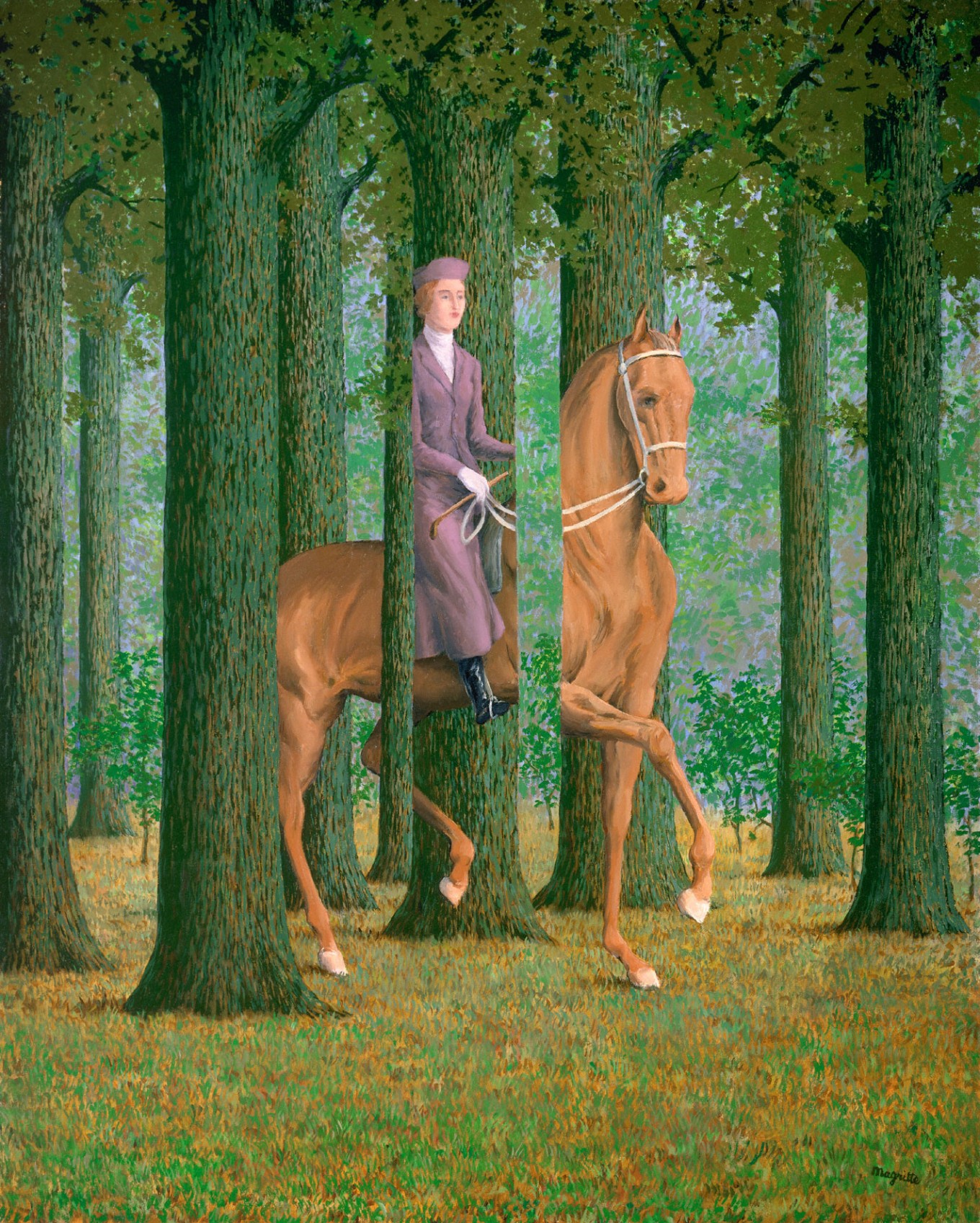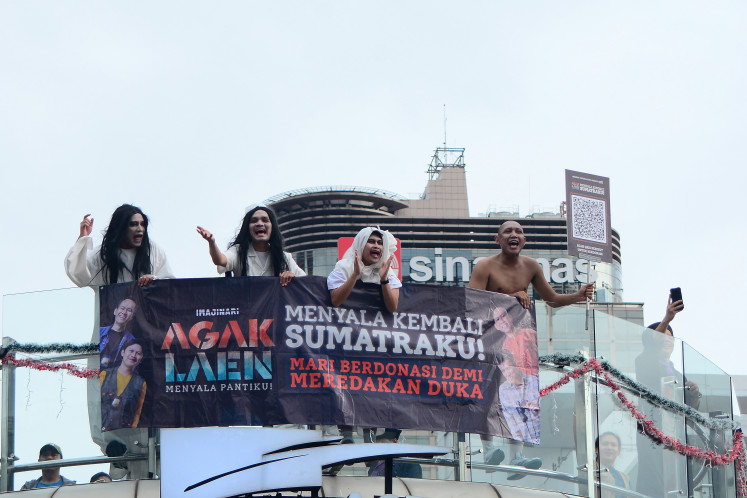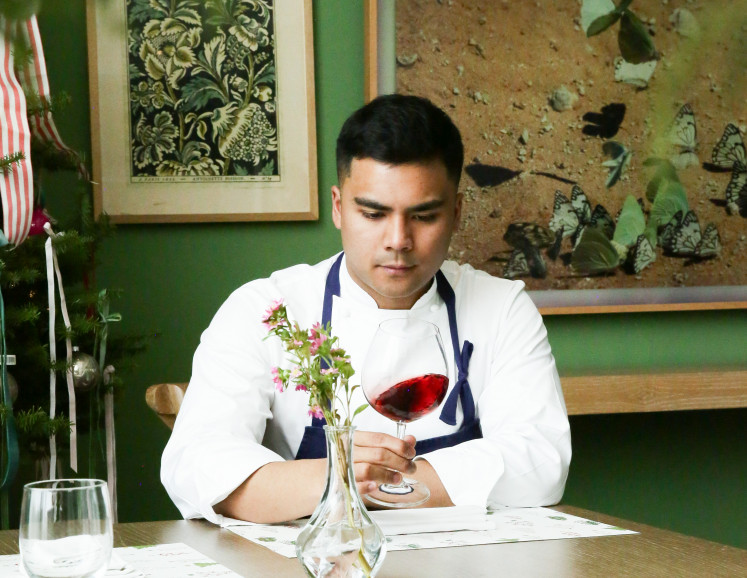Popular Reads
Top Results
Can't find what you're looking for?
View all search resultsPopular Reads
Top Results
Can't find what you're looking for?
View all search resultsMarveling at Magritte's 'Treacherous Images' in Paris exhibition
According to the introduction, the "Magritte: La trahison de images" (Magritte: The Treachery of Images) exhibition, slated until the end of January, offers a completely new approach to the work of the Belgian master René Magritte.
Change text size
Gift Premium Articles
to Anyone
L
iving close to Centre Pompidou, known as Beaubourg to those familiar with the museum and its cultural offerings, colors my life in Paris.
The industrial architecture shocked me at first, but then it became a familiar landmark. The view of the city from the top of the building is breathtaking in fine weather.
The sheer range of what takes place there, from films and events to exhibitions of all kinds, is impossible to absorb. There is even a huge public library. Like so many other tourists, cultural observers and casual visitors, I pick and choose according to my whims and leisure.
(Read also: Photo exhibition rings alarm bells over Jakarta flooding)
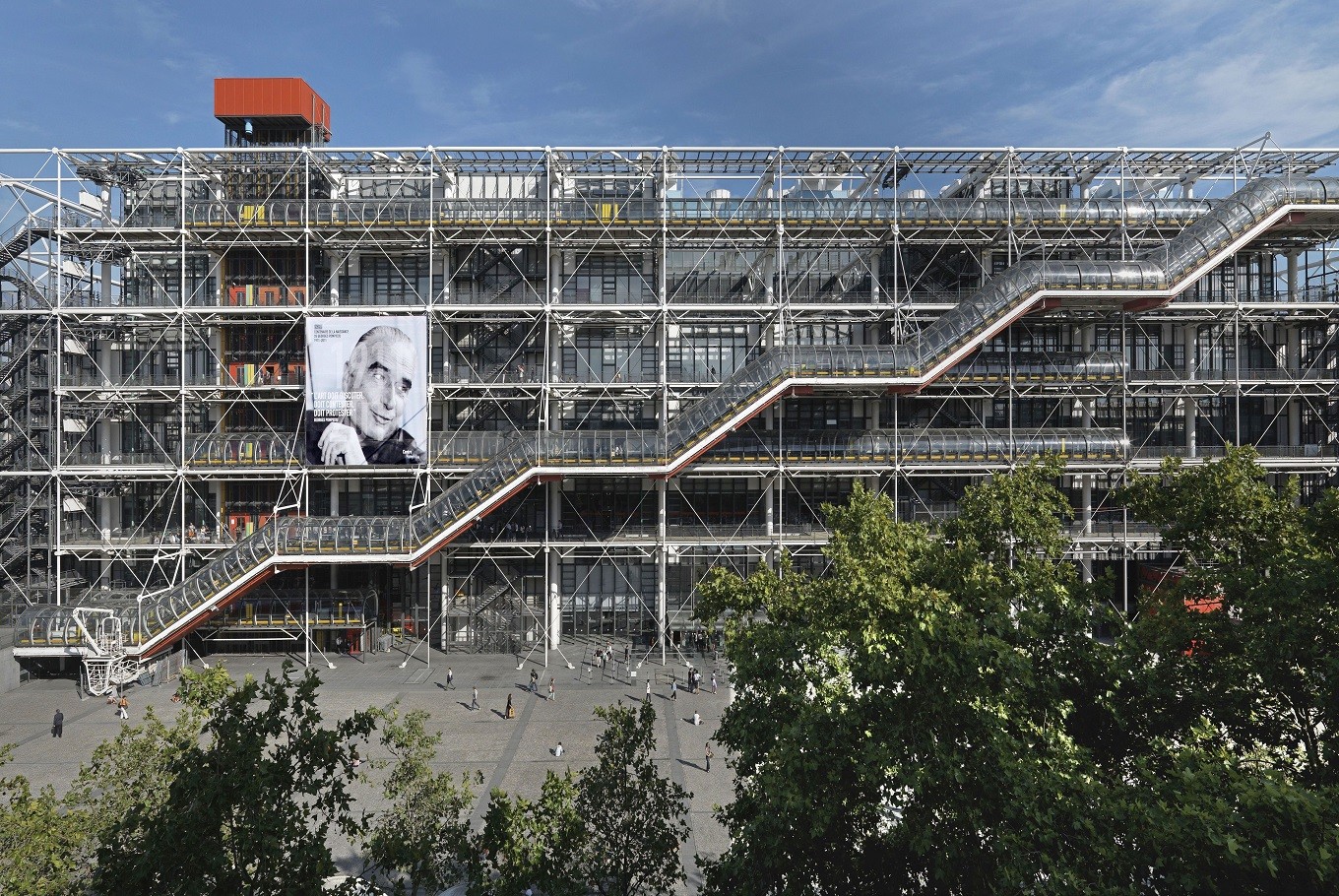 A huge image of Georges Pompidou hanging in front of the building by Renzo Piano and Richard Rogers, in a photo taken in 2011.(Centre Pompidou/Georges Meguerditchian)
A huge image of Georges Pompidou hanging in front of the building by Renzo Piano and Richard Rogers, in a photo taken in 2011.(Centre Pompidou/Georges Meguerditchian)
Often the influx of visitors calls for patience, not only because selfies are being taken almost everywhere. Now extra security measures also hinder the flow, so that visiting can be hazardous. For those who cannot walk easily, the escalators protected by the glass facade are sometimes out of order and the lifts not always reliable.
But the call of Rene Magritte (1898-1967) is hard to ignore.
So many paintings by the Belgian artist have become references in advertising or passed into universal imagery that it seemed worth the effort to dodge eager visitors, some with wieldy baby carriages or in wheelchairs, to confront yet another selection of Magritte’s opus. The artist’s paintings in private or public collections are often hidden from the common mortal.
According to the introduction, the "Magritte: La trahison de images" (Magritte: The Treachery of Images) exhibition, slated until the end of January, offers a completely new approach to the work of the Belgian master René Magritte.
Curator Didier Ottinger focused on the artist’s interest in philosophy, choosing about 100 paintings, drawings and documents. The title of the exhibition is that of a painting in 1929, an ironic expression of what the artist perceived to be a general misconception of his art. Some may not be aware that Magritte took a cerebral approach to images and their connotations.
At the beginning, after traversing a vaguely impressionist period, the budding artist adopted many of the shock techniques of fellow surrealists with their conceptions of beauty – they often coupled random visual images – before he experimented with unusual combinations of words and images governed by reasoning and philosophical inclinations.
Magritte began ‘word-painting’ with juxtapositions of images and words to illustrate the problems that concerned him, like the condition of women or psychological troubles. In fact, these almost abstract depictions were not intended to amuse, but rather to induce people to reflect about them. Needless to say, many visitors did appear bemused when regarding the word-paintings. Likewise, paintings of a distressed hen contemplating a boiled egg with a recently laid one behind it, or a pair of empty boots turning into human feet also prompted some to gasp in amazement.
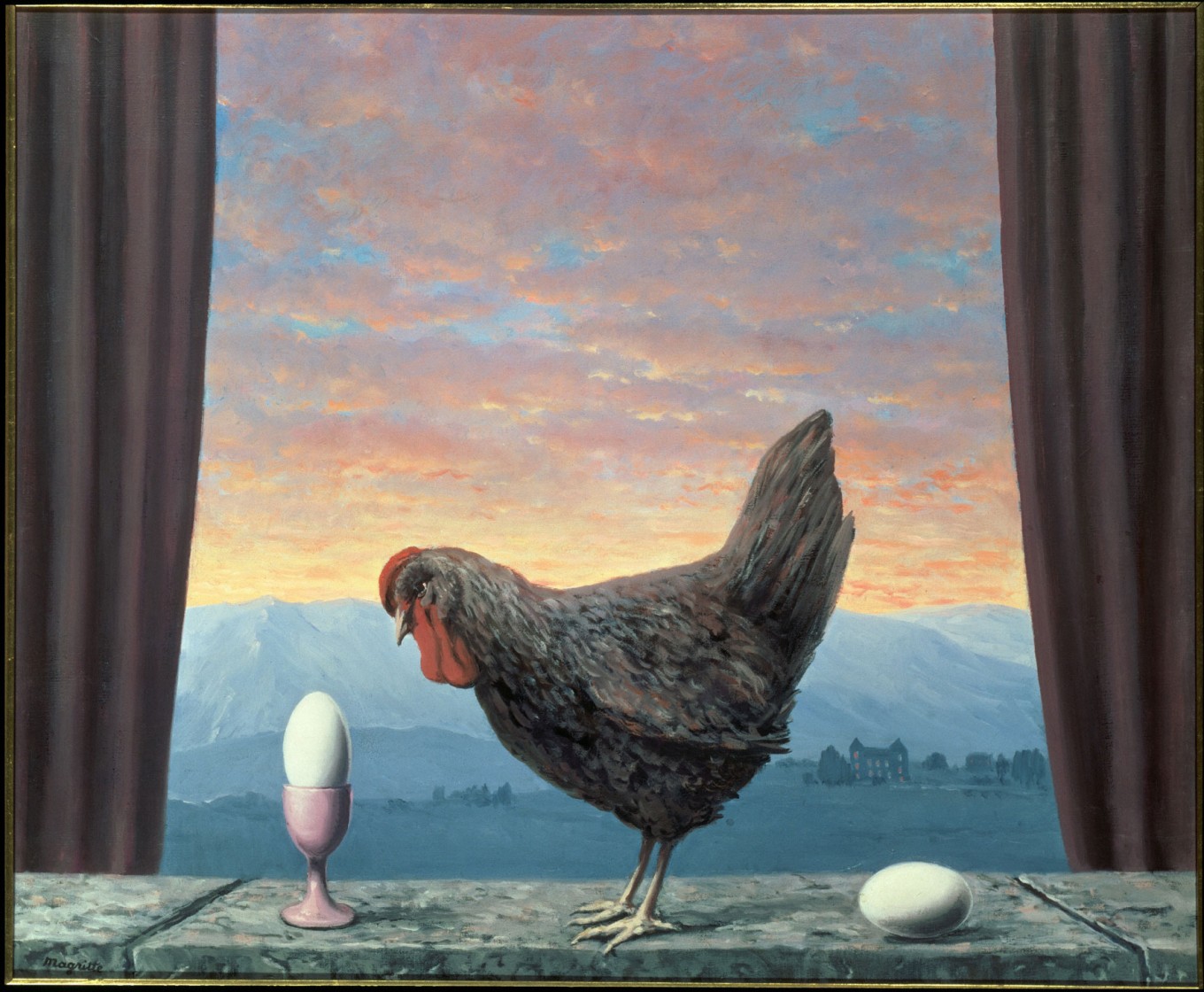 Variante de la Tristesse 1957 (Variation of Sorrow) depicting a sad hen contemplating what eggs are used for instead of being hatched.(ADAGP, Paris 2016, Phototheque R. Magritte/File)
Variante de la Tristesse 1957 (Variation of Sorrow) depicting a sad hen contemplating what eggs are used for instead of being hatched.(ADAGP, Paris 2016, Phototheque R. Magritte/File)
As a commercial artist, Magritte influenced generations of those working in advertising, thus the constant references to his ideas in the past and at the present. Magritte worked as a freelance graphic designer before he became wealthy enough to support his wife Georgette Berger adequately by the sale of paintings through galleries.
They moved to Le Perreux-sur-Marne, near Paris, in 1927, but returned to Brussels because of the worsening economic situation, despite the fact that most collectors based in Paris had begun to show interest in acquiring Magritte’s paintings and drawings.
Magritte turned to rigorous constructions of paintings, ignoring pictorial inspiration. Later, in 1953, in a letter to Belgian philosopher A.M. de Waelhans, he wrote: “I had to discover for myself that thoughts offer the only illuminations.” Magritte also entered into correspondence with French philosopher Michel Foucault a year before dying in 1967, inspiring Foucault to write the essay "Ceci est une Pipe" in 1973.
(Read also: Vatican Museums set to host Borobudur Garden)
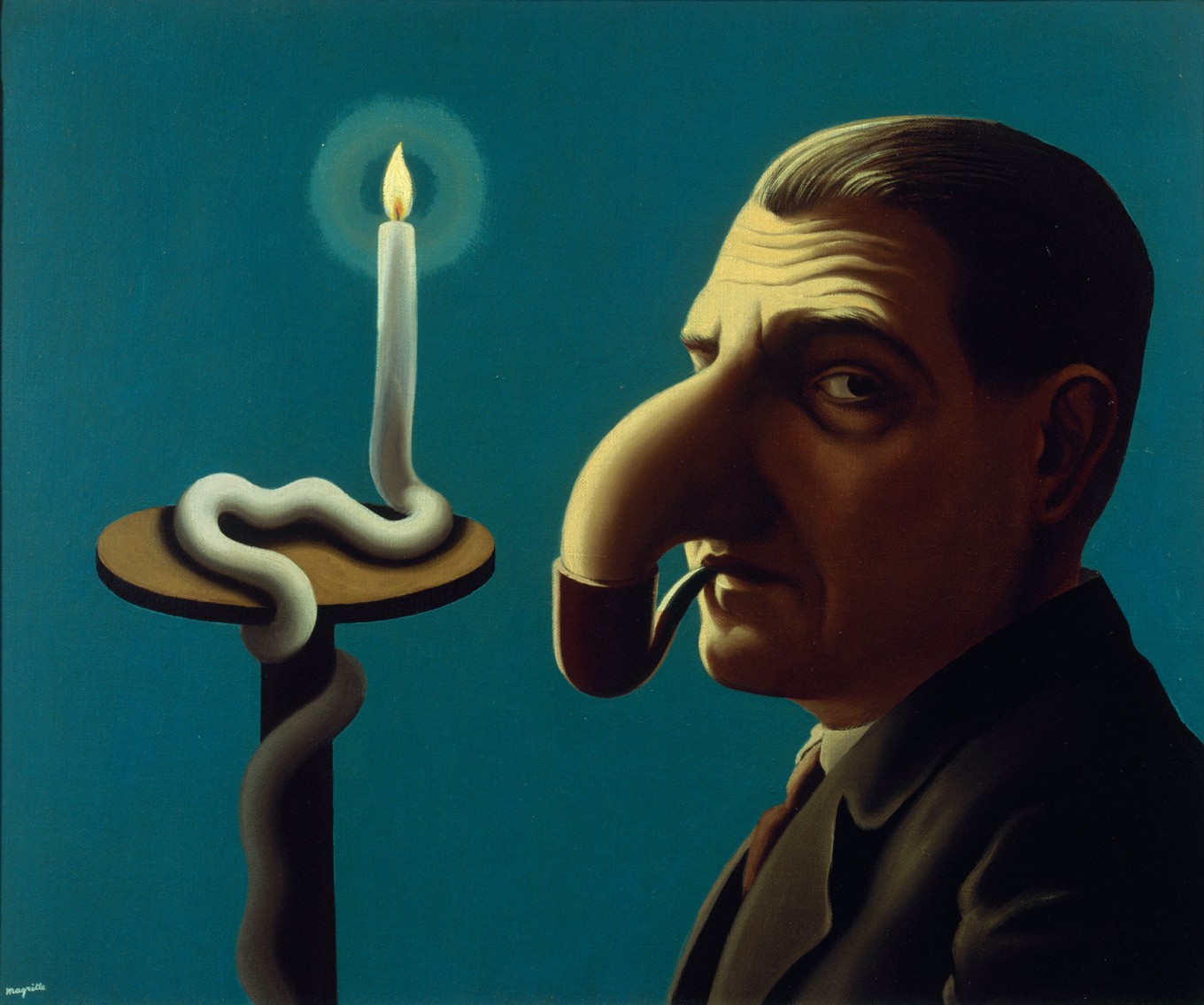 La lampe philosophique (Lamp of Philosophy) 1935 was painted while Rene Magritte was engaged in a discussion with a Belgian philosopher, after he more or less disengaged himself from his Surrealist friends in Paris and was back in pre-war Brussels with his
wife Georgette Berger.(ADAGP, Paris 2016, Phototheque R. Magritte/File)
La lampe philosophique (Lamp of Philosophy) 1935 was painted while Rene Magritte was engaged in a discussion with a Belgian philosopher, after he more or less disengaged himself from his Surrealist friends in Paris and was back in pre-war Brussels with his
wife Georgette Berger.(ADAGP, Paris 2016, Phototheque R. Magritte/File)
Series of motifs like curtains, shadows, words, flames, bodies in pieces, were endlessly re-arranged together with the famous bowler hat, sometimes representing the artist himself.
In 1936, Magritte depicted "The Philosopher’s Lamp", a man with his nose curving into the pipe he is smoking while a candle with a snake’s tail lights up the scene. The year before he had finished "The Interpretation of Dreams", one of his series of word-paintings that caught my attention.
 The Key of Dreams (1935) was painted back in Brussels, shortly before the outbreak of World War II.(AGADO, Centre Pompidou, exhibition Magritte/File)
The Key of Dreams (1935) was painted back in Brussels, shortly before the outbreak of World War II.(AGADO, Centre Pompidou, exhibition Magritte/File)
Further in the show, the differing attitudes of grown-ups and children examining how Magritte broke up female body parts in small frames or squashed parts of the body in one frame like a puzzle was fascinating to behold.
One showed an artist finishing a realistic depiction of a nude by using his brush to complete her arm, thereby bringing her to life in flesh and blood. This made me wonder what the small boy gazing up at the scene would understand or remember. Would he become an artist himself? Nearby, a tall thin man was bent over intently examining each part of a shattered female body.
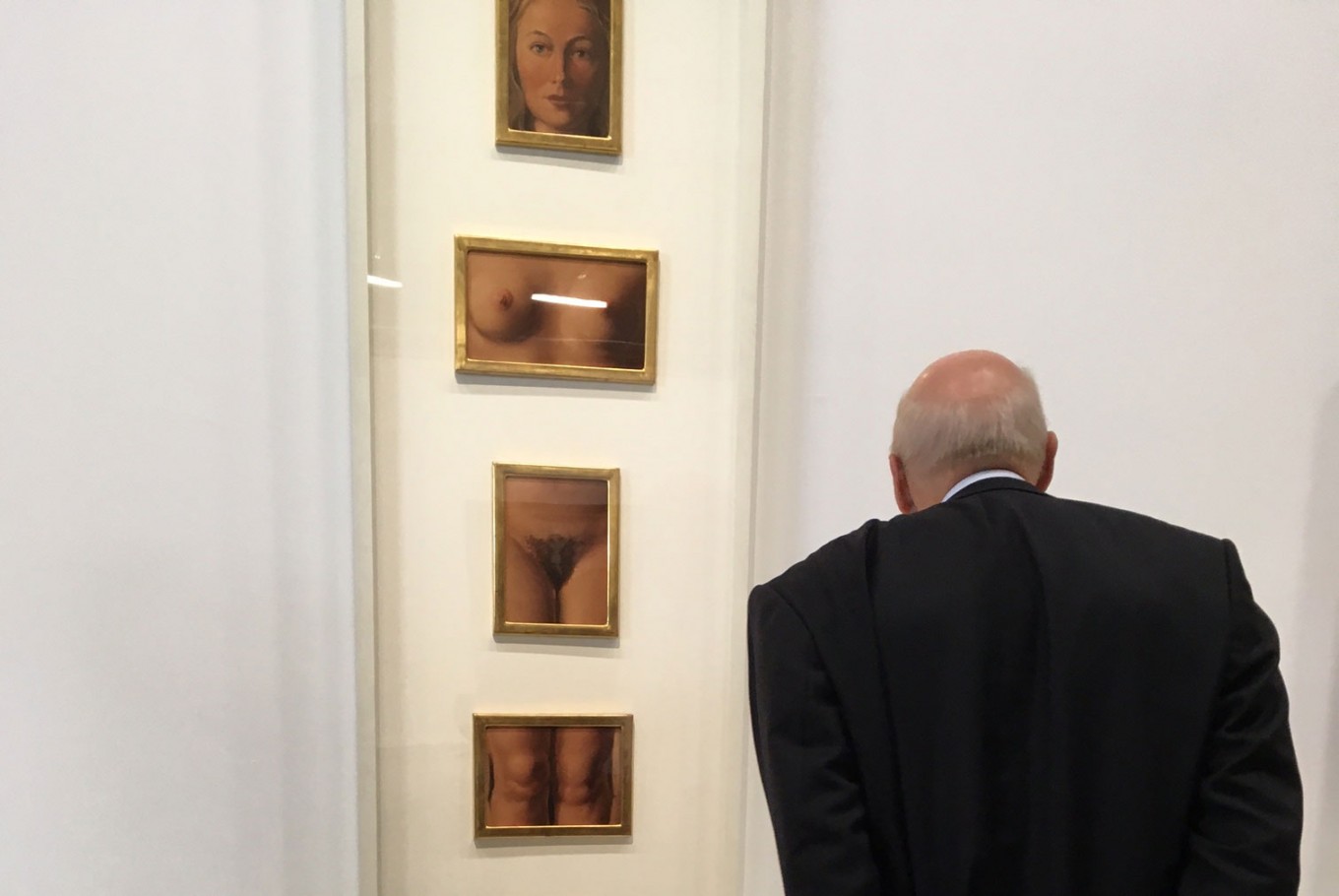 Man bending over to examine one of the framed female body parts of a Magritte work at the current show, Beaubourg, in a photo dated October 2016.(JP/Kunang Helmi)
Man bending over to examine one of the framed female body parts of a Magritte work at the current show, Beaubourg, in a photo dated October 2016.(JP/Kunang Helmi)
I left the show vowing to return when less visitors were present. The image of the perfectly executed oil painting of an umbrella with a glass full of water balanced on the top (Hegel’s Holiday 1958) lingered in my mind’s eye while scrutinizing the grey Parisian sky to see if it was about to pour yet again.
---------------
Interested to write for thejakartapost.com? We are looking for information and opinions from experts in a variety of fields or others with appropriate writing skills. The content must be original on the following topics: lifestyle ( beauty, fashion, food ), entertainment, science & technology, health, parenting, social media, and sports. Send your piece to community@jakpost.com. Click here for more information.

